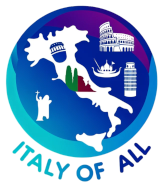The province of Ragusa, located in the southeastern part of Sicily, Italy, is celebrated for its rich Baroque architecture, stunning landscapes, and deep agricultural roots. Recognized as part of the Val di Noto and home to several UNESCO World Heritage Sites, Ragusa represents a remarkable blend of cultural heritage and natural beauty.
Geographically, Ragusa is characterized by its varied landscape, which includes the Hyblaean Mountains—a series of low, rocky hills—and the fertile plains that stretch towards the coast. The province’s coastline features beautiful sandy beaches and cliffs, making it a popular destination for both locals and tourists.
Historically, Ragusa has a complex history that includes devastation caused by a major earthquake in 1693. The subsequent rebuilding during the Baroque period led to the creation of numerous stunning structures that define the architectural style of the region today. Ragusa is divided into two parts: Ragusa Ibla, the ancient city with its narrow medieval streets and exquisite Baroque buildings, and Ragusa Superiore, the modern part of the city built on the upper part of the hill.
Culturally, Ragusa is renowned for its rich Baroque architecture, as evidenced in cities like Modica and Scicli, where elaborate churches and palaces line the streets. These cities, along with Ragusa Ibla, form part of the UNESCO World Heritage Site known for its late Baroque towns of the Val di Noto. The province is also known for its traditional festivities, including the feast of Saint George in Ragusa Ibla and the chocolate festival in Modica, which celebrates the unique Aztec-inspired chocolate that is still produced in the town.
Cuisine in Ragusa is deeply rooted in Sicilian culinary traditions, with a strong emphasis on local ingredients like tomatoes, olives, and fresh seafood. Notable dishes include “cavati” (handmade pasta served with pork ragù), and “scacce,” a type of stuffed flatbread. Modica is particularly famous for its chocolate, which is made using ancient methods brought to Sicily from the New World by the Spanish.
Economically, Ragusa’s economy is primarily based on agriculture, with significant production of olives, carob, and vegetables. Dairy farming is also prominent, particularly the production of the renowned Ragusano cheese. Additionally, the province has developed a robust tourism sector, driven by its architectural sites, gastronomic heritage, and beautiful beaches. Oil extraction is another significant industry, contributing to the local economy.
Despite challenges such as economic diversification and the preservation of its historical sites, Ragusa continues to leverage its cultural and natural assets to promote sustainable development and enhance its attractiveness as a tourist destination.
Overall, the province of Ragusa offers a compelling mix of historical richness, cultural vibrancy, and natural beauty. Its ongoing commitment to preserving its unique Baroque heritage while fostering economic growth ensures its continued significance as a distinctive and cherished part of Sicily.
Comuni in Ragusa Province:
